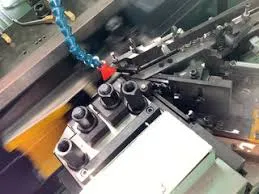
-
 Afrikaans
Afrikaans -
 Albanian
Albanian -
 Amharic
Amharic -
 Arabic
Arabic -
 Armenian
Armenian -
 Azerbaijani
Azerbaijani -
 Basque
Basque -
 Belarusian
Belarusian -
 Bengali
Bengali -
 Bosnian
Bosnian -
 Bulgarian
Bulgarian -
 Catalan
Catalan -
 Cebuano
Cebuano -
 Corsican
Corsican -
 Croatian
Croatian -
 Czech
Czech -
 Danish
Danish -
 Dutch
Dutch -
 English
English -
 Esperanto
Esperanto -
 Estonian
Estonian -
 Finnish
Finnish -
 French
French -
 Frisian
Frisian -
 Galician
Galician -
 Georgian
Georgian -
 German
German -
 Greek
Greek -
 Gujarati
Gujarati -
 Haitian Creole
Haitian Creole -
 hausa
hausa -
 hawaiian
hawaiian -
 Hebrew
Hebrew -
 Hindi
Hindi -
 Miao
Miao -
 Hungarian
Hungarian -
 Icelandic
Icelandic -
 igbo
igbo -
 Indonesian
Indonesian -
 irish
irish -
 Italian
Italian -
 Japanese
Japanese -
 Javanese
Javanese -
 Kannada
Kannada -
 kazakh
kazakh -
 Khmer
Khmer -
 Rwandese
Rwandese -
 Korean
Korean -
 Kurdish
Kurdish -
 Kyrgyz
Kyrgyz -
 Lao
Lao -
 Latin
Latin -
 Latvian
Latvian -
 Lithuanian
Lithuanian -
 Luxembourgish
Luxembourgish -
 Macedonian
Macedonian -
 Malgashi
Malgashi -
 Malay
Malay -
 Malayalam
Malayalam -
 Maltese
Maltese -
 Maori
Maori -
 Marathi
Marathi -
 Mongolian
Mongolian -
 Myanmar
Myanmar -
 Nepali
Nepali -
 Norwegian
Norwegian -
 Norwegian
Norwegian -
 Occitan
Occitan -
 Pashto
Pashto -
 Persian
Persian -
 Polish
Polish -
 Portuguese
Portuguese -
 Punjabi
Punjabi -
 Romanian
Romanian -
 Russian
Russian -
 Samoan
Samoan -
 Scottish Gaelic
Scottish Gaelic -
 Serbian
Serbian -
 Sesotho
Sesotho -
 Shona
Shona -
 Sindhi
Sindhi -
 Sinhala
Sinhala -
 Slovak
Slovak -
 Slovenian
Slovenian -
 Somali
Somali -
 Spanish
Spanish -
 Sundanese
Sundanese -
 Swahili
Swahili -
 Swedish
Swedish -
 Tagalog
Tagalog -
 Tajik
Tajik -
 Tamil
Tamil -
 Tatar
Tatar -
 Telugu
Telugu -
 Thai
Thai -
 Turkish
Turkish -
 Turkmen
Turkmen -
 Ukrainian
Ukrainian -
 Urdu
Urdu -
 Uighur
Uighur -
 Uzbek
Uzbek -
 Vietnamese
Vietnamese -
 Welsh
Welsh -
 Bantu
Bantu -
 Yiddish
Yiddish -
 Yoruba
Yoruba -
 Zulu
Zulu
Optimizing Setup for Thread Rolling Machines in Manufacturing Processes
Thread Rolling Machine Setup An Essential Guide for Precision Manufacturing
The thread rolling process is a critical method in the manufacturing industry, primarily used to create threads on metal components with greater strength and durability compared to traditional cutting processes. The setup of a thread rolling machine is crucial to achieving optimal performance, consistent quality, and efficient production. In this article, we will explore the essential steps and considerations in setting up a thread rolling machine.
Understanding the Thread Rolling Process
Before delving into the setup, it is important to understand what thread rolling entails. Thread rolling is a cold forming process where the material is deformed to produce threads. This method typically uses two cylindrical rolls with grooves matching the desired thread profile. The material is fed between the rolls, and as they rotate, the threads are formed through the displacement of the material. This process not only improves the mechanical properties of the threads but also enhances the fatigue strength and reduces waste.
Preparing for Setup
1. Select the Right Machine Different machines offer varying capabilities. Before beginning setup, assess the specifications required for your production needs, such as thread size, type (external or internal), and production volume. Choose a machine that fits these criteria.
2. Gather Necessary Tools Ensure that all required tools and equipment are available before starting the setup. This includes measuring instruments, lubricants, safety gear, and, if applicable, software for machine control.
3. Review Specifications and Blueprints Familiarize yourself with the specifications and engineering drawings of the parts to be produced. Understanding the required tolerances and surface finishes will help in fine-tuning the machine settings.
Step-by-Step Setup Process
1. Machine Positioning Place the thread rolling machine on a stable, level surface to minimize vibration and ensure consistent outcomes during operation. Proper alignment is crucial for the machine to function optimally.
thread rolling machine setup

2. Install the Rolls Position the thread rolling dies carefully. Ensure that the rolls are aligned correctly and securely fastened. Misalignment can lead to uneven thread formation and increased wear on the dies.
3. Adjust the Feed Rate Set the feed mechanism according to the material type and diameter. The correct feed rate is vital to ensure that the material enters the rolls smoothly and continuously.
4. Set the Roll Speed Adjust the speed of the rolls based on the material being threaded. Different materials may require different speeds to achieve the best results, and the roll speed should be set to optimize both quality and efficiency.
5. Lubrication Apply the appropriate lubricant to reduce friction and heat during the rolling process. Lubrication is essential for prolonging the life of the rolls and improving the quality of the threads.
6. Test Runs and Adjustments Conduct trial runs with scrap material to verify that the setup is correct. Measure the dimensions and quality of the threads produced. Any deviations from the desired specifications should prompt adjustments to feed rate, roll speed, or alignment.
Operational Safety
Safety should be a top priority during the setup and operation of thread rolling machines. Operators must wear appropriate personal protective equipment, such as gloves and eye protection, to safeguard against flying debris and other hazards. Regular maintenance checks are also essential to prevent malfunctions and ensure a safe working environment.
Conclusion
Setting up a thread rolling machine requires careful planning, attention to detail, and a solid understanding of the manufacturing process. By following the steps outlined and prioritizing safety, manufacturers can achieve high-quality thread production that meets the demands of their applications. The efficiency and reliability of thread rolling make it a preferred method in precision engineering, leading to enhanced product performance in various industries.
